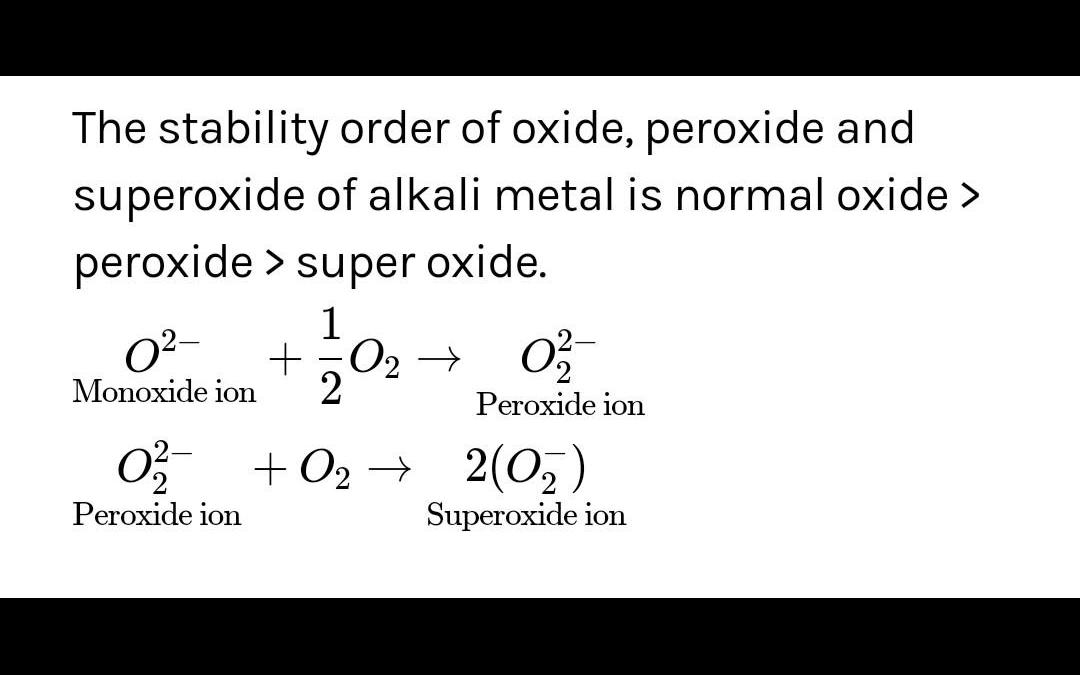Time management is very much important in IIT JAM. The eduncle test series for IIT JAM Mathematical Statistics helped me a lot in this portion. I am very thankful to the test series I bought from eduncle.
Nilanjan Bhowmick AIR 3, CSIR NET (Earth Science)Shweta Thakur posted an Question
- IIT JAM
- Chemistry (CY)
Plz explain this... he dtabily do e oxide heroude oud suherlidesakalt mtal o2
he dtabily do e oxide heroude Oud suherLidesakalt mTal O2
- 0 Likes
- 7 Comments
- 0 Shares
-
![comment-profile-img]() >
>
-
![comment-profile-img]() >
>
Dinesh khalmaniya 1
normal oxide> peroxide >superoxide
-
![comment-profile-img]() >
>
Dinesh khalmaniya 1
Oxides: Stability decreases down the group with lithium oxide the most stable. Peroxides: Increases and then decreases as we go from top to bottom in the group with sodium peroxide having the maximum stability. Superoxide: Stability increases down the group. Superoxides of K, Rb and Cs are most stable. Larger cations are stabilized by larger anions due to higher lattice energies.The anion sizes in increasing order are oxide < peroxide < superoxide, so lithium forms the most stable oxide, sodium the most stable peroxide and superoxide is the most stable form for the rest. The high charge density of lithium ion attracts the negative charge so strongly that it does not allow the oxide ion to take up another oxygen atom to form the peroxide ion. Sodium forms a peroxide as it forms a comparatively weaker positive field around it. K, Rb and Cs have weaker positive field around their cations and thus the oxide ion can take up two more oxygen atoms to form the superoxide ion.
![eduncle-logo-app]()
plzexpalin this point that larger cation stanilize larger anion
![eduncle-logo-app]()
if the cation is small and anion is large or if cation is large and anion is small, we cannot have strong electrostatic force of attraction due to less overlap of the electron clouds of both. ... Due to form a stable lattice, larger cations stabilize large anions and smaller cations stabilize smaller anions.
![eduncle-logo-app]()
got it??
-
![comment-profile-img]() >
>
Dinesh khalmaniya 1
hope this will help you 🙏
-
![comment-profile-img]() >
>
Do You Want Better RANK in Your Exam?
Start Your Preparations with Eduncle’s FREE Study Material
- Updated Syllabus, Paper Pattern & Full Exam Details
- Sample Theory of Most Important Topic
- Model Test Paper with Detailed Solutions
- Last 5 Years Question Papers & Answers
Sign Up to Download FREE Study Material Worth Rs. 500/-










 >
>



 >
>









Priyanshu kumar
hope it will helps u😊🙏